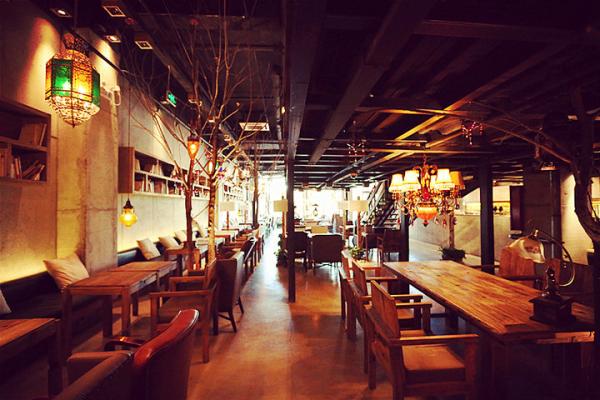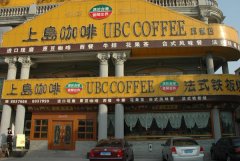Korean cafes are on fire in China. The most injured is Pizza Hut.

With the rise of Korean cafes, the most hurting rival is not Starbucks.
Korean cafes have gained momentum in China over the past two years. Apart from the number one coffee company in South Korea (caffebene), Korean coffee shops opened in China (maancoffee) and various themed cafes like Zoo Coffee (zoocoffee) have soared in China.
Many people believe that the rise of Korean cafes will bring great challenges to Starbucks, but if you compare the two carefully, you will find that the opponent that may be hurt after the popularity of Korean cafes is not necessarily Starbucks, but the established Shangdao Coffee. And restaurants in the name of "leisure", such as Pizza Hut.
With the rapid expansion of China's coffee market in recent years, the relationship between "Chinese people are getting richer" is also inseparable from the efforts made by Nestl é, Starbucks and other enterprises in the popularization of coffee. According to a report released by market research company Mintel, the size of China's coffee market has risen from 5.554 billion yuan in 2009 to 10.343 billion yuan in 2013. Coffee is one of the fastest growing categories in China's non-alcoholic beverage market.
Mintel predicts that the Chinese coffee market will grow at a double-digit rate in the future, because in terms of per capita consumption, the Chinese coffee market has huge room for development. The per capita consumption of non-liquid coffee in China in 2013 was 32 grams. They are 1/30, 1/50 and 1/70 of those in the United Kingdom, the United States and Japan, respectively.
South Korean coffee companies came to China for such development opportunities, and in a big tone.
I didn't officially come to China for coffee to accompany you until 2012, and the goal is to expand to 1000 stores by 2015. It took starbucks almost 14 years to achieve this number of stores.
Relying on its idyllic style, which is completely different from Starbucks, Korean cafes quickly captured a large number of fans, especially female consumers. Compared with the simple and strong coffee-smelling environment of Western cafes such as Starbucks and Kashijia, Korean cafes are generally characterized by large floor-to-ceiling windows and pastoral customs filled with the smell of vegetation. wooden tables, chairs and retro objects can be seen everywhere, with more space and higher comfort. Xin Zixiang, founder of Man Coffee, said that Man Coffee is trying to create a "third space". The details are also more considerate, such as opening up "smoking areas" to attract male consumers.
It is worth mentioning that the concept of "third space" first came from Starbucks, making the cafe a third place besides home and work. In recent years, however, Starbucks has moved further and further away from this concept in order to pursue the "turnaround rate". One of the most criticized is that Starbucks table and chair design is not suitable for the human body to sit there comfortably for a long time. Starbucks uses paper cups so that customers can leave with coffee at any time. At Starbucks, what you see is more like ordering a cup of coffee per person.
Korean cafes, by contrast, prefer to profit from higher single consumption. In this kind of cafe, coffee is just a drink in a wide variety of menus. Take zoo coffee as an example, there are juice and soda in addition to coffee, and there are a wide variety of snacks-pizza, chicken wings, French fries and so on. The average guest will order a drink with one or two snacks and spend the afternoon there.
The fierce offensive of Korean cafes does make the forerunners a little frightened, but in the Chinese market, Starbucks is unlikely to be seriously injured. On the one hand, the positioning of the two sides is very different. Starbucks mostly opens in crowded areas, while Korean cafes like to keep a quiet distance from busy areas in order to reduce rent costs; on the other hand, Starbucks relies on its strong financial advantage to open stores very fast. In recent years, Starbucks has rapidly infiltrated from China's first-and second-tier cities to third-and fourth-tier cities at the rate of opening more than 300new stores a year. It already has 1500 stores in China, and it plans to open one new store every 18 hours in the future. Double the number of stores by 2019.
According to Wang Zhendong, secretary general of the Coffee Professional Committee of the Shanghai Food Association, Starbucks has a greater advantage over Korean coffee shops in terms of brand recognition. "people who like Starbucks may just like the taste of Starbucks. Buying a cup of coffee at Starbucks has become a consumption habit, and through years of development in China, Starbucks has become a status symbol, even if the symbol weakens in first-and second-tier cities. But in China's third-and fourth-tier cities, Starbucks still has a lot of room. "
Wang Zhendong believes that Korean cafes with obvious "leisure" characteristics may touch the passenger flow of some leisure restaurants, such as Pizza Hut and all kinds of tea restaurants.
When it comes to cafes, Shangdao Coffee faces an even greater crisis.
When it comes to Shangdao Coffee, it also has a glorious history, even as of 2013, Shangdao Coffee is still the largest coffee chain in China by store volume. However, in the past decade, the development of Shangdao coffee is not impressive. Now walking into Shangdao Coffee, in the dark shop, the background music I hear is still the saxophone version of "A Dream." Diners are not only middle-aged men who talk about business, but also group buyers who come to have lunch boxes. While other brands are expanding rapidly, the number of Shangdao Coffee stores has shrunk again and again because of joining disputes, rising rents and other reasons.
Esther Lau, an analyst at Mintel, believes that Shangdao Coffee has failed to keep pace with the needs of the younger generation, which is an important reason for its decline, and in terms of performance-to-price ratio, it is difficult to become a competitor to restaurants such as KFC.
The influx of Korean cafes has made some restaurants feel "crisis". Recently, Pizza Hut's brother brand KFC began to advertise freshly ground coffee, and Haagen-Dazs began to expand its coffee business. Esther Lau believes that with the entry of more overseas coffee enterprises, the competition in China's coffee market will be more fierce in the future.
In Wang Zhendong's view, although Starbucks and Shangdao Coffee still have a high competitive advantage in terms of the number of stores, the existence of diversification will be a norm in China's coffee market in the future. In the future, cafes will develop from a place to drink coffee to an environmental platform, cafes with various themes will be more popular, and their profit ways will be diversified. "from a global point of view, where the coffee market is mature, chain brands do not account for a high proportion of the market."
Important Notice :
前街咖啡 FrontStreet Coffee has moved to new addredd:
FrontStreet Coffee Address: 315,Donghua East Road,GuangZhou
Tel:020 38364473
- Prev

The current situation of Coffee in China: an Analysis of domestic Coffee joining Market
At present, the domestic coffee market is mainly divided into three forms: one is a western restaurant that came from Taiwan in the early days, dominated by western food and supplemented by coffee. This kind of coffee restaurant generally requires a relatively large area, basically more than 300 square meters, and even up to 800 or 1000 square meters. The requirements for decoration are more dignified and the cost is high. Need a large kitchen, kitchen equipment is expensive, and
- Next

Where is the way for Hainan Coffee Industry to be a High-quality Cultural Brand?
Haikou net December 16 news (Haikou Evening News full-media reporter Li Yin) data show that China's coffee market space will continue to expand, the next 10 years will enter a period of rapid growth. By 2020, the consumption of Chinese coffee market is expected to reach 300 billion yuan. So, what is the current situation of Hainan's local coffee market? Recently, the reporter investigated and learned that Hainan coffee is very promising, Chengmai and Wanning.
Related
- What is the standard process for the purpose of coffee cup testing? What is the difference between hand-brewed coffee and cup testing?
- How to use hand-brewed coffee paragon small golden balls? How does cold coffee lock in the aroma of coffee?
- Is American coffee black? What is the difference between American coffee and drip coffee?
- Unexpected! Well-known tea beverage brand Lele Tea will withdraw from the Zhengzhou market!
- Starbucks enters the fashion and beauty industry?! Netizen: Give me an ice American eye cream
- Why can American refills for free? The difference between Americano and American drip pot coffee
- Being chased out of the rain in front of Starbucks?! Store: Sheltering from rain under umbrellas poses a safety hazard
- The white moonlight has changed?! Lucky launches "Big Winter Pear American"
- Hand-brewed coffee three-stage method, high-sweet and universal brewing method to share! What does the high sweet water level of hand-brewed coffee mean?
- What is the difference between raw, refined and full espresso coffee? How to extract espresso and taste good?

